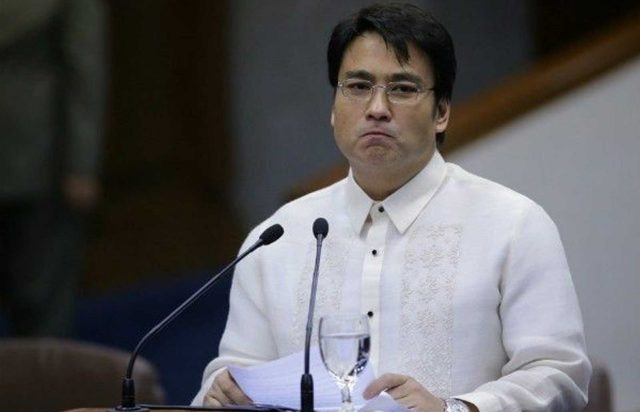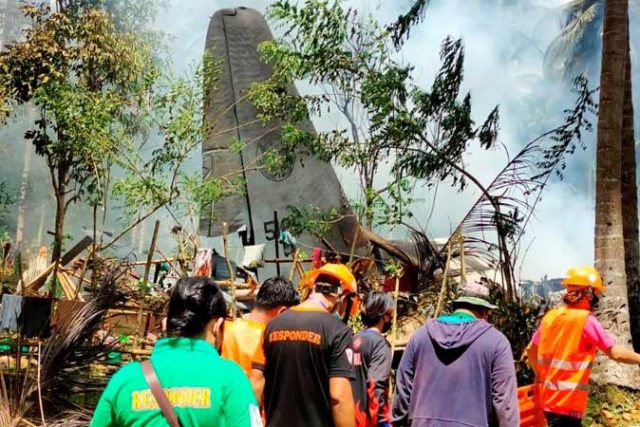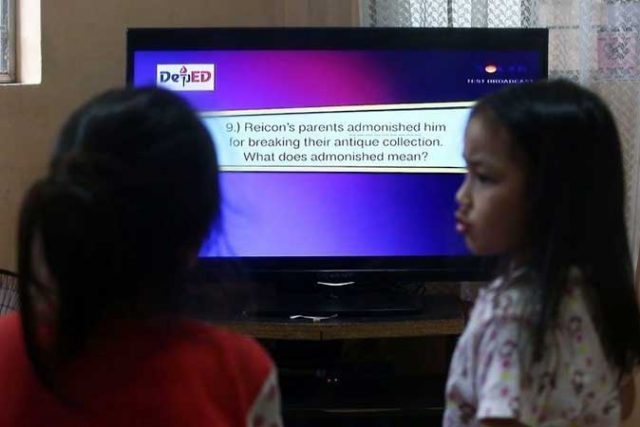Stocks climb despite lower volume ahead of data
PHILIPPINE shares climbed on Monday even as trading volume declined as most investors were waiting for the release of the country’s June inflation data.
The Philippine Stock Exchange index (PSEi) went up by 34.12 points or 0.48% to close at 7,036.38 on Monday, while the all shares index rose by 20.64 points or 0.48% to finish at 4,315.61.
“The local market rallied for the third straight day on lackluster volume as investors await the inflation data which will be released [on Tuesday],” AB Capital Securities, Inc. Junior Equity Analyst Lance U. Soledad said in a Viber message.
“The PSEi inched higher on lower trading volumes, led by gains in property and holding firms. Monday has always been a slow trading day as most markets abroad are still closed for the weekend,” AAA Southeast Equities, Inc. Research Head Christopher John Mangun said in an e-mail.
“There is a lot of optimism among investors as most are willing to hold and even add to current positions as the economy recovers. However, everyone will be watching the inflation figures that will be out later this week, and any unwelcome surprises may cause a sell-off,” Mr. Mangun added.
Value turnover decreased to P4.31 billion with 1.79 billion shares switching hands on Monday, from the P5.85 billion with 2.77 billion shares traded on Friday.
The Philippine Statistics Authority is scheduled to release June inflation data on Tuesday, July 6.
Inflation in June likely breached the central bank’s target for the sixth straight month, though slower due to improving food supply and falling transport prices, analysts said.
A BusinessWorld poll of 14 analysts held last week yielded a median estimate of 4.3% for June headline inflation, matching the midpoint of the 3.9% to 4.7% estimate of the Bangko Sentral ng Pilipinas for the month. That is faster than the 2.5% print in June 2020 and the central bank’s 2-4% target for the year, but slower than the 4.5% in May.
Majority of sectoral indices closed in the green on Monday except for financials, which inched down by 2.56 points or 0.16% to 1,515.93.
Industrials climbed by 85.15 points or 0.87% to 9,786.63; property went up by 28.26 points or 0.83% to 3,403.40; holding firms gained 35.73 points or 0.5% to 7,062.31; mining and oil improved by 38.76 points or 0.39% to end at 9,877.32; and services rose by 5.23 points or 0.32% to 1,620.04.
Advancers outperformed decliners, 110 versus 98, while 51 names closed unchanged. Foreigners turned sellers anew, logging P82.10 million in net outflows on Monday versus the P754.03 million in net purchases seen on Friday.
“We expect the market to move sideways for now as the sustained trading above the 7,000 level is not yet supported by heavy volume,” AB Capital Securities’ Mr. Soledad said. — Keren Concepcion G. Valmonte
Peso drops vs dollar as oil prices climb after OPEC+ fails to reach deal
THE PESO depreciated versus the greenback for the third straight day on Monday as global oil prices inched higher and due to increased demand for the dollar as the economy gradually reopens.
The local unit closed at P49.24 per dollar on Monday, shedding four centavos from its P49.20 finish on Friday, based on data from the Bankers Association of the Philippines.
Monday’s close was the peso’s weakest since the P49.25-per-dollar finish seen on July 27, 2020.
The peso opened Monday’s session at P49.10, which was also its intraday best. Meanwhile, its weakest showing was at P49.325 versus the greenback.
Dollars traded increased to $1.073 billion on Tuesday from $956 million on Friday.
Rizal Commercial Banking Corp. Chief Economist Michael L. Ricafort attributed the peso’s weakness to demand for the dollar as oil prices continued to rise. He noted that higher oil prices could also increase the country’s import bill and affect the currency.
Reuters reported that Brent crude rose by 15 cents or 0.2% to $76.32 by 0558 GMT on Monday. This came after uncertainties regarding major oil exporter countries’ production increase in the months ahead.
The Organization of the Petroleum Exporting Countries and its allies (OPEC+) on Friday supported a proposal to increase production by about 2 million barrels per day (bpd) from August to December and to extend the remaining output cuts to the end of 2022. However, the group was unable to reach a final agreement due to objections from the United Arab Emirates (UAE).
Decisions in OPEC+ must be unanimous. OPEC+ ministers were set to resume talks on Monday.
The spat erupted at a sensitive time for the oil market and could delay plans to pump more oil through to the end of the year to cool global oil prices that have soared to 2-1/2-year highs.
Consuming nations want more crude to prevent high prices derailing a global recovery from the COVID-19 pandemic.
Prince Abdulaziz bin Salman, energy minister of Saudi Arabia, the biggest oil exporter in OPEC, called on Sunday for “compromise and rationality” to secure a deal.
The UAE said it supported releasing more oil but not extending remaining cuts beyond April 2022 without an agreement to revise its own output baseline —the level from which production cuts are calculated.
The UAE, which has invested billions of dollars to lift capacity, says its baseline was set too low when OPEC+ originally forged their pact to limit supplies.
Responding to oil COVID demand destruction, OPEC+ agreed last year to cut output by almost 10 million bpd from May 2020, with plans to phase out the curbs by the end of April 2022. Cuts now stand at about 5.8 million bpd.
Meanwhile, a trader said the peso depreciated due to demand for the dollar as the coronavirus situation in the country improves, which could result in more imports as businesses reopen or expand their operating capacity.
Infections rose by 5,392 on Monday, bringing the country’s tally to 1.441 million, based on data from the Department of Health.
For Tuesday, Mr. Ricafort gave a forecast range of P49.10 to P49.30, while the trader expects the local unit to move within the P49.15 to P49.25 band against the dollar. — L.W.T. Noble with Reuters
One million vaccine doses from Japan arriving
By Kyle Aristophere T. Atienza, Reporter
THE GOVERNMENT will take delivery of a million more doses of coronavirus vaccines this week care of Japan, according to the presidential palace, in a boost to its vaccination drive.
About a million AstraZeneca doses donated by the Japanese government and 170,000 Sputnik V vaccines ordered from Russia would arrive this week, presidential spokesman Herminio L. Roque, Jr. told a televised news briefing on Monday.
He said 11.7 million doses of coronavirus vaccines had been given out as of July 2, 8.8 million of which were first doses.
About 1.1 million health workers, 897,719 seniors and 788,630 seriously ill people have received their second doses. Mr. Roque said 26,109 essential workers and 227 indigent Filipinos have also been fully vaccinated.
About 57% of intensive care unit beds (ICU) in the country had been used as of July 4, while 46% of isolation beds and 44% of wards were occupied, he added
In the capital region, 46% of ICU beds were occupied, while 38% of isolation beds and 33% of ward beds were used.
The Department of Health (DoH) reported 5,392 coronavirus infections on Monday, bringing the total to 1,441,746.
The death toll rose to 25,192 after 43 more patients died, while recoveries increased by 6,477 to 1,364,960, it said in a bulletin.
There were 51,594 active cases, 91.1% of which were mild, 3.8% did not show symptoms, 1.5% were critical, 2.1% were severe and 1.57% were moderate.
The agency said 15 duplicates had been removed from the tally, nine of which were tagged as recoveries. Twenty recoveries were reclassified as deaths. Ten laboratories failed to submit data.
The government expects the Metro Manila to attain so-called population protection by November, Health Undersecretary Maria Rosario Vergeire told a separate news briefing.
“Aside from having this certain percentage of vaccinated individuals, we need to ensure that enough seniors and people with comorbidities are vaccinated,” she said in mixed English and Filipino.
Health authorities last week said the Philippines was at low risk from the coronavirus after declining infections in the past two weeks.
Infection rates fell by 9% in the two weeks that ended on June 26, Health Director Alethea de Guzman said.
The average national daily attack rate — new cases divided by the population — stood at 5.42, within the moderate risk classification. An average of more than seven is considered high risk.
The daily infection tally increased slightly to 5,772 from June 24 to 30, from 5,638 from June 17 and 23, she said.
DoH flagged the Davao region, Western Visayas, Soccsksargen and Eastern Visayas for rising coronavirus infections.
The infection rate in the Davao region had more than doubled in the past two weeks, while the rate in Western Visayas was 63%, 67% in Soccsksargen and 118% in Eastern Visayas.
The daily attack rate in the Davao region was 9.14, 8.12 in Western Visayas, 7.1 in Soccsksargen and 7.05 in Eastern Visayas, she said.
Coronavirus cases in Metro Manila fell by 26% from June 13 to 26, while its average daily attack rate was at 5.01, which is considered low risk.
Infections in the capital region have plateaued after a slow decline in the past weeks. The average daily tally in the seven days ended June 30 stood at 694, from 686 a week earlier.
Coronavirus infections in Luzon have fallen except for the Cordillera Administrative Region, Ilocos and Mimaropa, the Health department said.
Cases in Eastern and Western Visayas were rising, while Central Visayas had experienced a plateau after a sharp decline. Infections in Mindanao have been falling except for the Davao region, where the trend is inconsistent.
The Philippines aims to inoculate at least 500,000 people daily in Metro Manila, Rizal, Bulacan, Cavite, Laguna, Metro Cebu and Metro Davao to achieve herd immunity by Nov. 27.
Anti-graft tribunal clears senator in pork barrel scam
THE COUNTRY’S anti-graft court has dismissed corruption charges against a senator whom the late President Benigno S.C. Aquino III had managed to send to prison for allegedly pocketing hundreds of millions of pesos in pork barrel funds.
In a 196-page decision, the Sandiganbayan Special First Division junked 16 counts of graft against Senator Ramon “Bong” Revilla, Jr. for insufficiency of evidence. The court granted his plea to dismiss the cases without the defense having to present evidence.
Associate Justice Geraldine Faith Econg wrote the decision, with two justices concurring and two dissenting.
Prosecutors in 2014 indicted the actor-turned-politician of getting P224 million in kickbacks after funneling part of his discretionary funds as a senator to bogus nongovernment groups.
The court also junked the remaining cases against Mr. Revilla’s former chief of staff Richard Cambe, who died from stroke while jailed at the national penitentiary in April.
The same court cleared Mr. Revilla in 2018 of plunder over the same charges that led to his freedom. He also staged a political comeback and is now a senator again.
The lawmaker earlier argued the allegations in his plunder case were the same as in his graft cases, adding that he should not have been separately charged for corruption.
He also said prosecutors had failed to prove that he had endorsed the nongovernment groups and received kickbacks.
During trial, prosecutors presented 11 endorsement letters signed by Mr. Revilla or his aide. But the Sandiganbayan said the senator’s signatures were just recommendations and did not compel implementing agencies to award the projects to fake nongovernment groups.
And since neither Mr. Revilla nor Mr. Cambe had the power to award the projects, they were not in a position to give “unwarranted benefits” under the country’s anti-graft law, the court said.
“The bonds posted by accused Revilla re hereby ordered released, subject to the usual accounting and auditing procedures,” according to the decision. “The hold departure orders issued against them are also set aside.”
But the court denied pork barrel scam mastermind Janet Napoles’s plea to dismiss her cases, meaning her trial will proceed. — Norman P. Aquino and Bianca Angelica D. Añago
Military rules out foul play in crash of C-130 aircraft
THE ARMED Forces of the Philippines (AFP) has ruled out a rebel attack by in the crash of a military C-130 plane on Sunday that killed 50 people.
There was no evidence of foul play, military spokesman Edgard A. Arevalo told CNN Philippines on Monday. He added that the plane crashed after missing the runway upon landing.
The aircraft followed protocols and had landed on the same runway many times in the past, he added.
Mr. Arevalo said the plane was “in tip-top condition” and had 11,000 flying hours remaining. He could not say whether it was overloaded or if the runway was in poor condition pending investigation.
The remains of the 47 soldiers and three civilians who died have been recovered and would be identified using dental records, he said. The 49 soldiers and four civilians who survived have been rescued and the injured brought to hospitals, he added.
“This is one of the most tragic incidents that happened in the AFP,” Mr. Arevalo said. “The AFP will be transparent in the investigation because just like you, we are very much interested in finding out what happened.”
The soldiers on board the C-130 aircraft were on a mission to bring more troops to Sulu province to boost the government’s fight against terror groups in southern Philippines including the Islamic State-linked Abu Sayyaf Group.
Mr. Arevalo said the accident affects the country’s defense and humanitarian operations, especially in Sulu, but said the military has “other assets and contingency measures in place.”
Recent military aircraft accidents might prompt the government to further modernize the country’s armed forces, presidential spokesman Herminio L. Roque, Jr. told a televised news briefing.
The C-130 mishap happened two weeks after a Black Hawk helicopter carrying six soldiers crashed during a night-flying exercise in Tarlac province.
“These events might, will provide impetus for further modernization,” Mr. Roque said. “We will ensure that we will proceed at full speed ahead in modernizing our armed forces because we need them in defending our territorial sovereignty.”
Mr. Roque said President Rodrigo R. Duterte was deeply saddened by the plane crash, considered as one of the country’s deadliest military aviation accidents. The President was set to visit the injured soldiers on Monday afternoon.
House Speaker Lord Allan Jay Q. Velasco vowed to help the Philippine Air Force replace the lost C-130 and support efforts to upgrade and modernize its fleet.
The House leader said Congress was supposed to include the purchase of more C-130 planes in the 2021 national budget, but there was not enough time to deliberate on the modernization of the its fleet when he took over as Speaker in October.
He urged the armed forces to investigate the accident “with the end in view of preventing such disasters from happening again.”
Air Force protocols should be reviewed and the safety of runways nationwide especially in the countryside should be probed, he said. — Bianca Angelica D. Añago and Kyle Aristophere T. Atienza
Fish harvested from Taal Lake safe
FISH from Taal Lake in Batangas province are safe for human consumption amid volcanic activities in Taal Volcano, according to the Bureau of Fisheries and Aquatic Resources (BFAR).
Fish cage operations and fishing activities in the lake continue and the water quality remained normal, bureau Regional Director Sammy A. Malvas told an online news briefing on Monday.
“Based on last week’s results, the water quality of Taal Lake is still at the normal level, with water parameters such as dissolved oxygen still normal,” he said. “We are still waiting for today’s analysis on new water samples.”
He said fish products harvested from Taal Lake are safe to eat. “We should just ensure proper handling and preparation before consumption.” — Revin Mikhael D. Ochave
Business group raises alarm on ‘serious crisis’ in PHL education
By Bianca Angelica D. Añago and Kyle Aristophere T. Atienza, Reporters
EDUCATION in the Philippines is “in serious crisis,” according to the Philippine Business for Education (PBEd), and this affects not just the young generation’s future but also the nation’s economic growth prospects.
“We are seeing declining access and quality of education, affecting the learning outcomes and future prospects of our youth and our country,” PBEd Chairman Ramon R. del Rosario, Jr. said in a webinar on Monday.
PBEd cited the findings of the Programme for International Student Assessment in 2018, which indicated that 72% of 15-year-old Filipinos are low achievers in the subjects of Reading, Math, and Science.
The disruption to education caused by the coronavirus pandemic has exacerbated this situation, said the education advocacy group founded by the country’s top business leaders.
Department of Education (DepEd) data show 1.1 million students did not enroll for schoolyear 2020-2021, while 1,179 private schools closed last year.
Parents tried to cope with the switch to online classes, which meant spending more for education.
In a survey by Samahan ng Nagkakaisang Pamilya ng Pantawid, a group of conditional cash transfer beneficiaries, more than 9,000 parent-respondents said they spent 40% more because of distance learning.
However, this increase in spending did not seem to result to better education for children, PBEd said, citing a 2021 Pulse Asia survey showing that one out of four parents think their children were not learning in the remote setup.
With all these, PBEd said education should be treated as a key issue in the 2022 national elections, and urged government to increase its budget for the sector.
PBEd also recommended to involve private companies in enhancing the complementarity between public and private education by providing work-based training for students.
The group also called for the passage of the Jobs Next Bill that seeks to train over seven million Filipinos in five years for future in-demand jobs.
“We might not feel its immediate impact now, but we stand to suffer long-term ramifications of inaction and poor learning. We deserve better; our people deserve so much more,” Mr. Del Rosario said.
WORLD BANK REPORT
Meanwhile Education Secretary Leonor M. Briones demanded a public apology from World Bank for releasing a report indicating that 80% of Filipino students fall below the minimum proficiency levels, saying the international agency did not consider the reforms currently being undertaken by the Philippine government.
Ms. Briones told a televised news briefing Monday that the World Bank report that found that most Filipino children “do not know what they should know in school” was based on outdated assessment.
Ms. Briones also lamented that the Washington-based agency, which has been a development partner of the Philippine Education department since the 1980s, failed to give the government an advance copy of its report, which used three global assessments from 2018 to 2019.
The World Bank should apologize in public “since the country was insulted, was shamed,” she said.
The education chief said the World Bank has sent her a letter, a “personal apology,” but this is not enough as it was the country, not her, who was hit by the report.
The Education minister noted that the report used a 2018 assessment program with “old data.” She added that a lot of developments have happened since 2019.
Ms. Briones also said the World Bank cannot solely blame the Philippines when there is a shortcoming in the country’s learning system, noting that improving the education sector involves partners, including the lending institution itself.
“We have long been partners with World Bank since 1981,” she said in Filipino, “We have taken a lot of loans from World Bank to improve education. So, they are partners, they are part of the situation here in the Philippines.”
She noted that the multilateral lender has lent the Philippines about $700 million since 1981.
On the other hand, ACT Teachers Party-list Rep. France L. Castro said “our youth could have received better quality education and would not have performed poorly in international assessments” if the government had been providing enough funds for facilities and improving teachers’ pay.
“The Department of Education’s incompetence immensely impacts teachers and students’ performance,” Ms. Castro said in a statement. “Among the outputs of DepEd’s incompetence and haphazard implementation of so-called education reform is the curriculum congestion, which compromises adequate teaching time and students’ deeper understanding.”
Ms. Castro also said prioritizing the welfare of teachers will improve their performance, which in turn will help Filipino students get higher quality education and score better in international assessments.
Cavite governor seeks DENR help in putting up a sanitary landfill facility
CAVITE GOVERNOR Juanito Victor C. Remulla has sought help from the Environment department in building a sanitary landfill facility for the province, whose rivers contribute to the waste problem in Manila Bay.
In a statement on Monday, the Department of Environment and Natural Resources (DENR) said the governor cited that 21 out of the 23 cities and municipalities in Cavite “did not have the capacity to put up their own solid waste facility because of land limitations.”
Mr. Remulla acknowledged that the province’s top environmental problem is managing solid waste, with an estimated 2,000 tons going to the province’s rivers per day. Of this volume, 90% flows to Manila Bay in the capital.
Cavite’s six major river systems are: Imus, Zapote, Rio Grande-Ylang-Ylang, Cañas, Labac, and Maragondon.
DENR and local government officials, led by Secretary Roy A. Cimatu and Mr. Remulla, recently met to discuss waste management solutions and the establishment of a sanitary landfill.
“We cannot complete the rehabilitation of Manila Bay if we will not solve the garbage problem in the province… The only way for us to solve the problem of Manila Bay is to solve the garbage problem and water quality of the rivers in Cavite,” Mr. Cimatu said.
The DENR chief explained that recent rains caused trash from waterways, including those from the Cavite rivers, to drift to Manila Bay, reversing the improvements made in the Baywalk area’s fecal coliform count and waste collection efforts.
Mr. Cimatu said the increasing presence of garbage in Cavite’s rivers may be an effect of the Environment department’s recent closure of all dumpsites in the province. — Angelica Y. Yang
Senator files bill on five-day epidemic leave
A SENATOR has filed a measure mandating paid leaves in the private sector during a state of calamity such as the coronavirus pandemic.
Senator Leila M. De Lima filed Senate Bill No. 2307, which provides for a five-day paid leave benefit to any private sector employee, regardless of employment status, who tests positive for the coronavirus disease 2019 (COVID-19) or any emerging infectious disease.
For employees placed on “floating status,” the measure proposes a maximum of 60 days of paid leave credits at 80% of the worker’s full pay.
“The proposed measure is a social justice tool that upholds workers’ most basic human rights. If we can offer protections to industries, nothing should stand in the way of shielding employees from oppressive situations that epidemics of this magnitude have confined them in,” the detained senator said in a press release.
While saying that the government “has rightly taken proactive steps to ensure the protection of capital investments in the country,” Ms. De Lima lamented that measures aimed at providing social safety nets for workers remain sorely lacking.
“In the absence of safeguards, these workers could find themselves in a situation where they may need to make a choice between health and income, which comes at a risk to both their health, the health of others and their economic well-being,” she said.
Under the bill, the grant of paid epidemic leave shall be made available upon the declaration of either a national or local state of calamity. — Kyle Aristophere T. Atienza
DAR to validate land titles distributed in Nueva Vizcaya
THE DEPARTMENT of Agrarian Reform (DAR) is set to validate land titles distributed in Nueva Vizcaya as part of the assessment of the country’s Comprehensive Agrarian Reform Program (CARP).
Agrarian Reform Undersecretary Carim L. Panumpang said the validation in the northeastern Luzon province will begin on July 12.
“We need to know whether our beneficiaries are still in possession of the farm lots awarded to them, had transferred them to their heirs by way of succession, or sold them already to the third parties,” Mr. Panumpang said in a statement on Monday.
Mr. Panumpang said DAR needs to establish the current status of CARP, which was launched in 1988.
He said DAR’s validation team had been to several other localities in Batangas, Cavite, Cebu, Mindoro, and Misamis Oriental, where they discovered that so far about “34% of the farm lots awarded to the beneficiaries are either sold due to poverty or abandoned as the farm lots are far from the beneficiaries’ residences.”
“The DAR may consider conducting inclusion and exclusion proceedings to recall the farm lots from undeserving beneficiaries and reallocate the farm lots to the deserving ones,” he added. — Revin Mikhael D. Ochave















